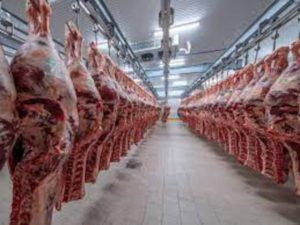By Dr. Daniel Elius Mushi
(Deputy permanent secretary for the Tanzania Ministry of Livestock and Fisheries, and Senior Lecturer at Sokoine University of Agriculture).
Tanzania’s substantial livestock resource comprises 35.3 million cattle, 25.6 million goats, 8.8 million sheep, and 92.8 million chickens. Despite the magnitude of this resource, the contribution of the livestock sector to the national gross domestic product stands at a mere 7.1%. Postharvest losses present one of the numerous challenges encountered by the livestock sector in the country. It is estimated that approximately 100,000 metric tons of meat, equivalent to 15% of Tanzania’s yearly production, are wasted due to postharvest losses and waste. This substantial loss carries severe environmental, social, and economic consequences. Raising awareness regarding the occurrence of meat losses and waste, including their causes and locations, will facilitate the recovery of meat that would otherwise go to waste. This awareness is expected to drive both private and public sector actions aimed at salvaging the meat produced but currently unavailable for human consumption.
Meat spoilage has been shown to contribute significantly to meat loss throughout the value chain. However, this loss can be mitigated simply by effectively managing the meat value chain, including the implementation of cold chains. Cold chains are employed to lower the temperature of meat at various stages of handling, inhibiting the growth of microorganisms, reducing enzyme activity, and slowing the rate of meat deterioration. Nonetheless, in Tanzania, as in many other African countries, the majority of consumers (over 90%) prefer to purchase warm meat, as it is perceived to be “fresh.” This consumer behavior acts as a barrier to comprehensive investment and the utilization of cold chains in the meat industry for reducing postharvest meat losses. This perception may have stemmed from past consumer experiences with cold-purchased meat exhibiting signs of spoilage due to inadequate cold storage. It is understood that any disruption of temperature and/or humidity beyond tolerable ranges at any stage of cold storage renders the entire cold chain ineffective. Furthermore, cross-contamination of meat before storage also contributes to meat spoilage during cold storage.
To overcome this barrier and bolster industrialization in Tanzania’s meat industry, a three-tier approach is necessary: coordinated consumer awareness campaigns to promote the suitability of cold meat, widespread training of stakeholders in the value chain regarding proper meat handling and storage practices, and the implementation of adequate legislation to guide the gradual transformation of the supply chain towards the provision of cold meat. In conclusion, the current cold storage capacity for meat in Tanzania primarily serves export and niche markets. Efforts are required to shift local consumers’ attitudes towards cold meat, enabling comprehensive investment and utilization of the cold chain in the meat industry to mitigate postharvest meat losses.

For more information: Click HERE
Mushi, D. E. (2023). Breaking the barrier against the purchase of cold meat in Tanzanian consumers for reduction of postharvest losses and improved investment in cold chains: A review. Multidisciplinary Reviews. https://doi.org/10.31893/multirev.2023005
The Department of Animal, Aquaculture, and Range Sciences
The College of Agriculture, Sokoine University of Agriculture
Share this page




